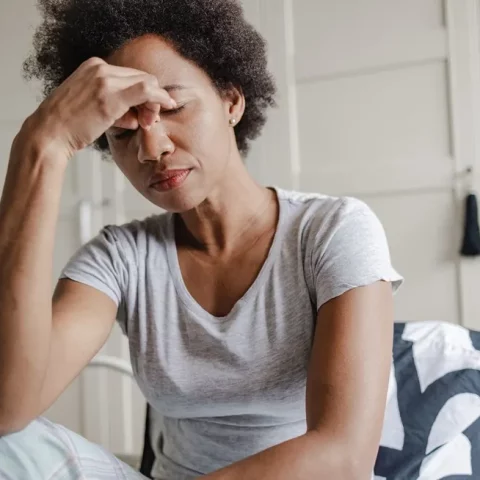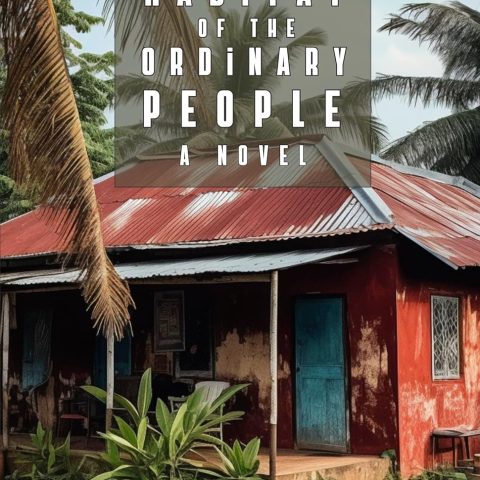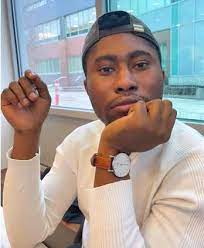Interviewed by Shola Adenekan
Friday, May 18, 2012.
Juliette Ingrid Goddard’s artistic talent as a young student earned her a prized place at London’s prestigious Royal College of Art. She has exhibited across the globe. Her sister is the television personality and talk-show host Trisha Goddard.
Please tell us your background, your childhood experience and growing up in different parts of the world?
Goddard: I was born in Kent to a Dominican mother and British father at a time when marriages between black and white people were considered unusual in Britain. I was one of four siblings, all girls. My father aware of racism in Britain then made a positive choice to move the family out of Britain to live and work in East Africa, after he was turned down for the “Ten pound” ticket to Australia on the grounds that he would carry an all-black family to down under. The experience of early years in East Africa provided a lifestyle like no other; we lived in a large house very colonial in style with house boy’s that did the shopping, the cooking and general duties. Growing up in Africa was inspiring, my sisters and I loved exploring the landscape, and safari in the Serengeti. Getting stuck in the dry river-beds and journey’s camping up the river Nile all part of wonderful memories. �
When did you discover you had a talent for painting art?
Goddard: I was about the age of sixteen when I felt I had a talent and passion for drawing and painting, it was brought to my notice by a school teacher who commented on my talent with the painting of a dog. �
You are a reputable artist and you’ve worked with several notable artists, what in your view makes a good art or artist?
Goddard: Great art makes you feel, and can inspire you for life. For me, it is the content of the painting; the colours and the technique of brush strokes and the passion that the work can invoke. Even if you dislike art, some works display the nature of the human condition. Like the most wonderful print by Munch “The Scream”. Long before we all became aware of mental health conditions, Munch suffered no end of internal turmoil but it is in his vision of external expression – “The scream” – in which you see the raw primitive nature of the disturbance of the mind with the woodcuts, lines that illustrate the passion for the human mind to express itself so powerfully. An art work that provides us with the pain of life and the disturbances of the interior mind, this could only be the experience of the human condition.
Where do you get your artistic inspiration from? Do you have a muse?
Goddard: My artistic inspiration has come from where I was brought up as a young girl in East Africa and I found my muse in Picasso. It was his visionary inspiration’s that empowered me to develop my own figurative themes of these intuitive works using the arts of Africa. �
What other aspects of the arts do you partake in?
Goddard: I do enjoy creative writing, which is a challenge for me and I have written several articles on the arts and artists I am inspired by or find challenging, in an effort to understand painters and the journeys they make. I play the piano and have put a composed piano piece together with a painting of “The nightingales”. I found that music and art work extremely well together for an overall vision of expression, of the journey of the bird’s flight and song.
Do you have a favourite out of all your works?
Goddard: At the moment it has to be this Nightingale piece!
If given the choice, where would you most like to exhibit?
Goddard: I would love to exhibit at the Royal Academy London, or in New York.
What are the challenges facing Black British artists in Britain and outside of Britain?
Goddard: The challenges of Black British artists are still very difficult; there is only one Black Royal Academician in the history of the academy – Frank Bowling whom I interviewed recently and who described the enormous challenges he faced just getting there. The hugely famous Chris Ofili, who is another Royal College graduate has taken flight to work in Trinidad and is now finding the London art scene too difficult. So you see, very few Black artists of reputation can stay in the UK. Steve McQueen also has left for the US and Europe. There still is no real inclusion within the mainstream art galleries and museums, no black tutors in most of the art schools, to encourage students of African-Caribbean heritage, and few black students make the Royal College of Art. I guess with no black tutors to support them and pull them up, the game of discrimination has really not changed very much at all!
When I did my teacher training and was trained by Islington to positively include cultural diversity, I found it hard then not to ask the questions; “well if you’re a great artist, you are great and it wouldn’t matter the colour of your skin?” It’s talent, but as time passed, I believe the debate is more of a global issue. There will be a lot of great Kenyan Olympic runners winning medals this year but how many great artists? And yet it was Picasso who surrounded himself with African masks and ethnic inspiration, who also drew ideas from Africa, also Henry Moore’s great etchings of elephant’s tusks and British Museum ethnography collection was no end of inspiration for his sculptures.
Is there such thing as Black British art?
Goddard: No I don’t believe there is such thing as Black British art! I think it might have begun and ended with Chris Ofili, whose talent has so far outweighed any other Black British artist, when you look at his reputation, content of his work, heritage and prices of his works in auction houses across the world. Yet, I ask myself has he already burnt out?
When you are not working what do you do for fun?
Goddard: I love travel for inspiration, visiting art galleries and museums, and I have always loved sports swimming and skiing.
Where do you see your career going?
Goddard: I would like to curate more exhibitions to include some of the works being produced by some of today’s best artists as well as my own works; pieces not represented as yet in the mainstream of Europe and America.
What advice do you have for up-and-coming Black British artists?
Goddard: Perhaps not to ignore your heritage as part of your life and work, as I know that the British art school system is very Eurocentric! They should try to enter the mainstream art galleries etc, and look to the art market as a global marketplace, where to be born black is universal and a great honour. They should look up to big artistic heroes and heroines who are Black, and who have made it through the British art school systems, and be positive about race and culture. We will never go back to the days of slavery and yet we cannot change the hurts or pain of the past. A cultural awareness will always move us forward; so to think of the great tools of expression and the great things to paint or communicate about. So we can see a future generation of outstanding Black British artists who can find a home in the UK.





